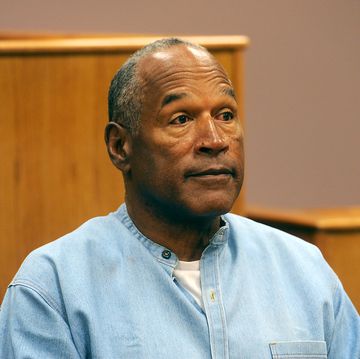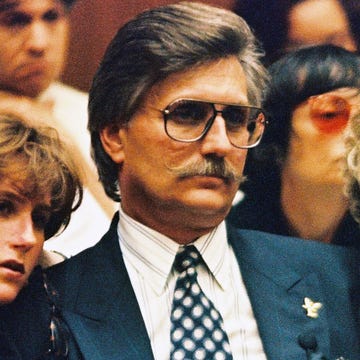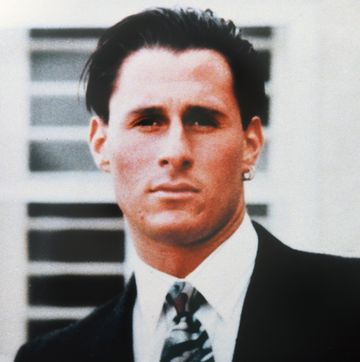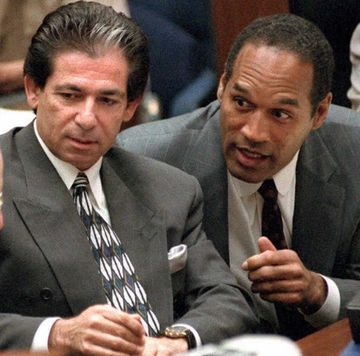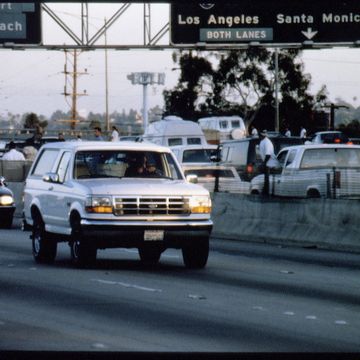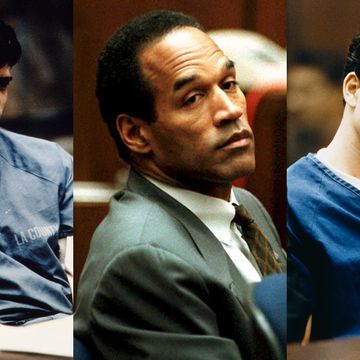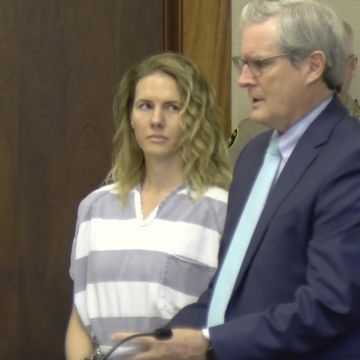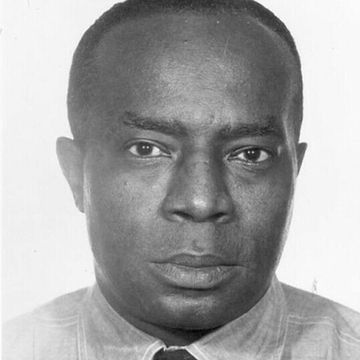(1968-2001)
Who Was Timothy McVeigh?
Raised in Pendleton, New York, Timothy McVeigh developed an interest in guns and his separatist leanings as a bullied teenager. He served with distinction in the Persian Gulf War, but grew increasingly disillusioned with the U.S. government after his discharge. Following months of planning, on April 19, 1995, McVeigh detonated explosives outside the Alfred P. Murrah Federal Building in Oklahoma City, Oklahoma, resulting in 168 casualties and another several hundred wounded victims. McVeigh was apprehended shortly after the bombing and was executed by lethal injection on June 11, 2001.
Early Life
Timothy James McVeigh was born on April 23, 1968, in Lockport, New York, and grew up nearby in the working-class town of Pendleton. After his parents divorced, he lived with his father and developed an interest in guns through target practice sessions with his grandfather. It was during this time he read The Turner Diaries, an anti-government tome by neo-Nazi William Pierce. The book described a bombing of a federal building and fueled McVeigh’s paranoia about a government plot to repeal the Second Amendment.
Tall, skinny and quiet, McVeigh was bullied as a teenager. He was also very bright, even earning a partial college scholarship after graduating from high school in 1986, though he only briefly attended a business school before dropping out.
In 1988, McVeigh enlisted in the U.S. Army and became a model soldier, earning the Bronze Star for bravery in the Persian Gulf War. He received an invitation to try out for the Army's special forces but gave up after only two days, and was discharged in 1991.
McVeigh initially returned to New York but soon took up a peripatetic lifestyle as he followed the gun show circuit, selling weapons and preaching the evils of the government. He periodically spent time with Army buddies Terry Nichols and Michael Fortier, who shared McVeigh’s passion for guns and hatred of federal authority.
Rising Anger
Two events involving the FBI's actions against separatists added fuel to McVeigh’s anger toward the government. First, in the summer of 1992, white separatist Randy Weaver was engaged in a standoff with government agents at his cabin in Ruby Ridge, Idaho. He was suspected of selling illegal sawed-off shotguns. The siege resulted in the death of Weaver’s son and wife.
Then, in April 1993, federal agents surrounded the Texas compound of a religious organization called the Branch Davidians to arrest their leader, David Koresh, on illegal weapons charges. On April 19, McVeigh watched on television as the FBI stormed the compound, resulting in a firestorm that killed dozens of Branch Davidians, including children.
Oklahoma City Bombing
In September 1994, McVeigh put into motion his plan to destroy the Alfred P. Murrah Federal Building in Oklahoma City, Oklahoma. With accomplices Nichols and Fortier, McVeigh acquired tons of ammonium nitrate fertilizer and gallons of fuel to form a highly volatile explosive. McVeigh chose the Murrah Federal Building because it provided excellent camera angles for media coverage. He wanted to make this attack a platform for his anti-government message.
On the morning of April 19, 1995, the second anniversary of the FBI siege on the Branch Davidian compound, McVeigh parked a Ryder truck loaded with the explosive substance in front of the Murray building. People were coming to work and on the second floor, children were arriving at the day-care center. At 9:02 a.m., the explosion ripped the entire north wall off the building, destroying all nine floors. More than 300 other buildings in the immediate area were damaged or destroyed. In the rubble were 168 victims, including 19 young children, and another 650-plus wounded.
Arrest, Trial and Execution
Early reports suggested that a Middle Eastern terrorist group may have been responsible, but within days, McVeigh was considered the primary suspect. He was already in jail, having been pulled over shortly after the bombing for a license plate violation, during which time he was found to be carrying an illegally concealed handgun. Nichols soon surrendered to authorities, and the two were indicted for the bombing in August.
Following a five-week-long trial that began in April 1997, McVeigh was convicted after 23 hours of deliberation, and he was sentenced to death. The following year, Nichols was sentenced to life in prison.
While on death row, McVeigh was interviewed for a biography, American Terrorist, by Lou Michel and Dan Herbeck. McVeigh spoke of the bombing with some pride, referring to the young victims as “collateral damage.” Meanwhile, his requests for an appeal and a new trial were rejected.
On June 11, 2001, following an attempted stay of execution, federal prison authorities placed a needle in McVeigh’s right leg and pumped a deadly stream of drugs into his veins. He died within minutes, and his body was cremated.
QUICK FACTS
- Name: Timothy James McVeigh
- Birth Year: 1968
- Birth date: April 23, 1968
- Birth State: New York
- Birth City: Lockport
- Birth Country: United States
- Gender: Male
- Best Known For: Timothy McVeigh was convicted of the 1995 Oklahoma City bombing, one of the deadliest acts of terrorism in American history. He was executed for his crimes.
- Industries
- Crime and Terrorism
- Astrological Sign: Taurus
- Death Year: 2001
- Death date: June 11, 2001
- Death State: Indiana
- Death City: Terre Haute
- Death Country: United States
Fact Check
We strive for accuracy and fairness.If you see something that doesn't look right,contact us!
CITATION INFORMATION
- Article Title: Timothy McVeigh Biography
- Author: Biography.com Editors
- Website Name: The Biography.com website
- Url: https://www.biography.com/crime/timothy-mcveigh
- Access Date:
- Publisher: A&E; Television Networks
- Last Updated: August 14, 2019
- Original Published Date: April 2, 2014
The Biography.com staff is a team of people-obsessed and news-hungry editors with decades of collective experience. We have worked as daily newspaper reporters, major national magazine editors, and as editors-in-chief of regional media publications. Among our ranks are book authors and award-winning journalists. Our staff also works with freelance writers, researchers, and other contributors to produce the smart, compelling profiles and articles you see on our site. To meet the team, visit our About Us page: https://www.biography.com/about/a43602329/about-us


